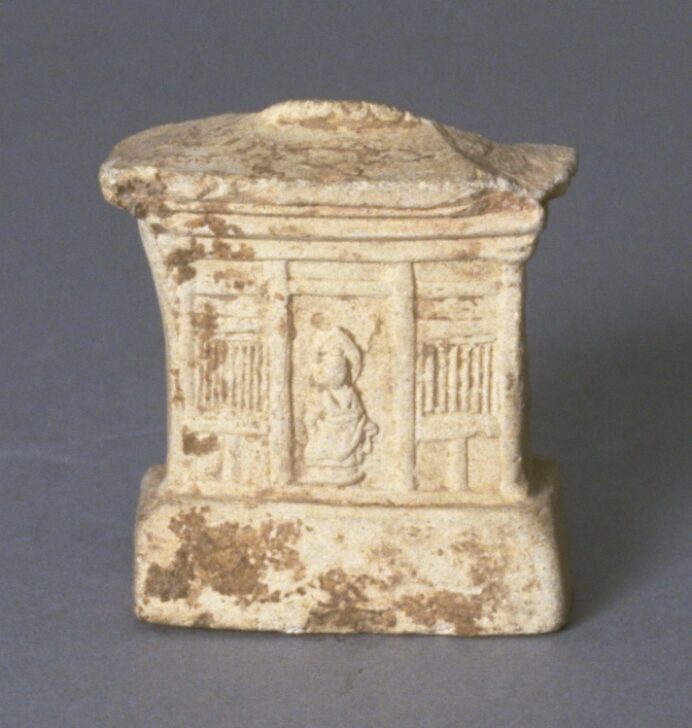Temple with Buddha Votive Plaque
Chinese

Description
Subject Matter:
An earthenware mingqi (明器), or "bright object", votive plaque featuring Amitabha Buddha in a temple from the Sui dynasty (581-617).
This small plaque would have served as a small, portable Buddhist shrine. Its presence in a tomb would suggest the occupant would have been a Buddhist. In Pure Land Buddhism, the predominant form of Buddhism in China during the 6th century, practitioners are reborn into Amitabha's Western Paradise through lotus buds. The representations of this phenomena in China depict Amitabha enthroned within a Chinese Pavillion surrounded by Bodhisattva and a sea of lotus flowers.
Physical Description:
A small, thin, earthenware molded plaque with a bas-relief architectural scene of a Chinese three-bay building on a dais. There are two slat windows and a hipped roof. A figure stands in the central doorway. The plaque is covered in a white slip.
Usage Rights:
If you are interested in using an image for a publication, please visit https://umma.umich.edu/request-image/ for more information and to fill out the online Image Rights and Reproductions Request Form.